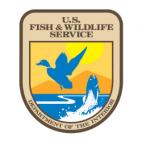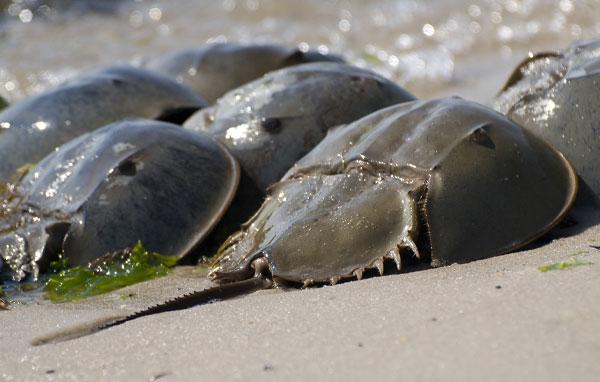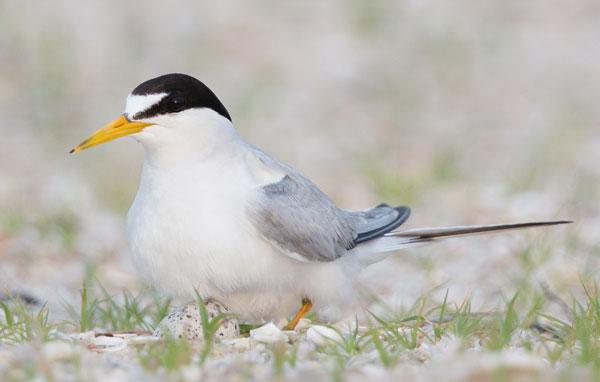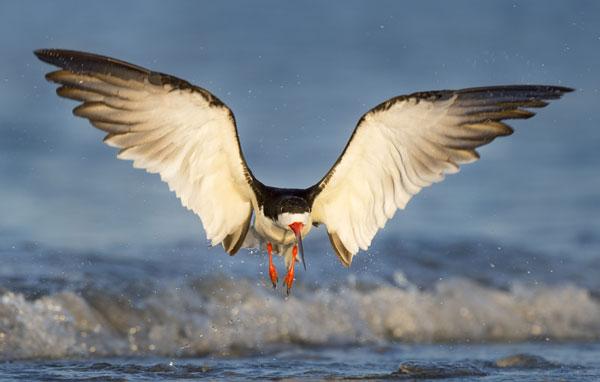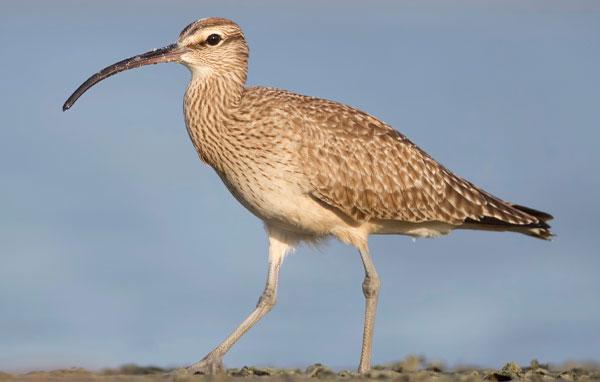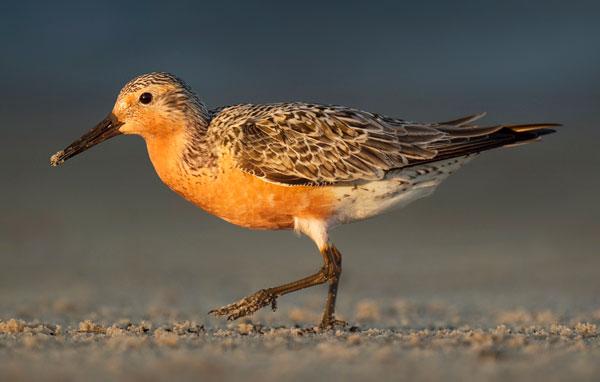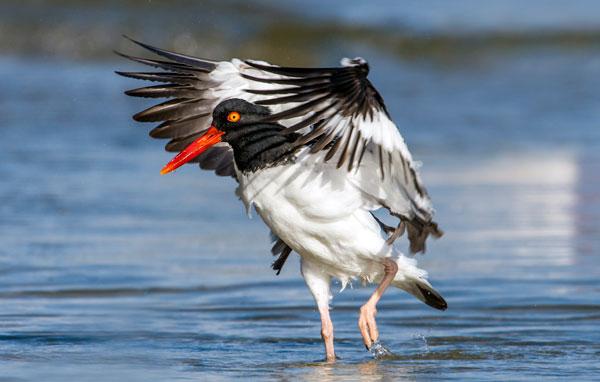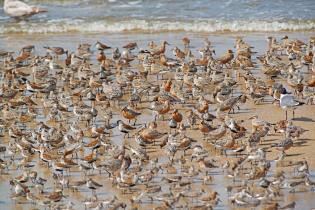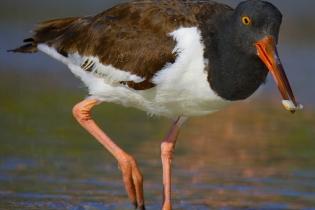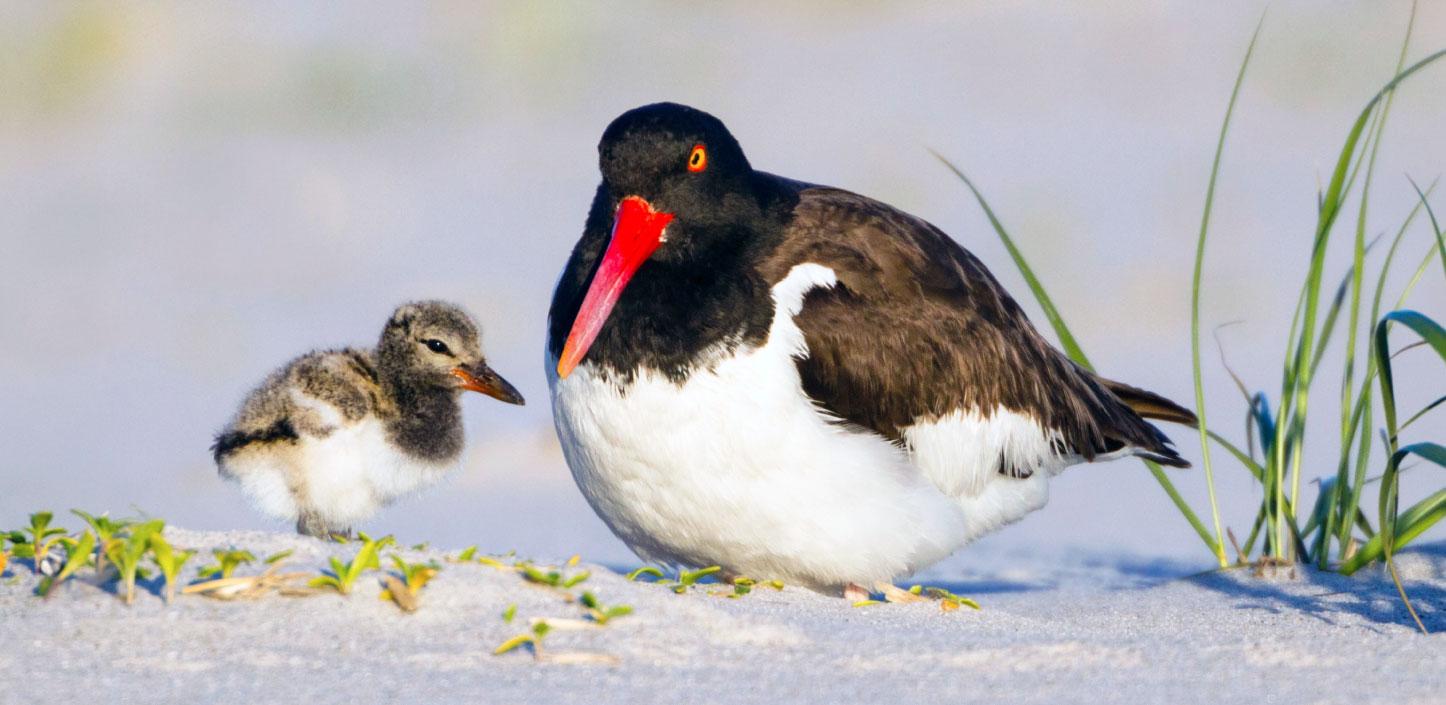
The Atlantic Flyway Shorebird Initiative aims to increase populations for three focal shorebird species within the flyway by 15 to 20 percent over a 10-year period. The three focal species – American oystercatcher, red knot and whimbrel – represent different migratory strategies and require specific approaches to address habitat loss, predation and human disturbance. To achieve this goal, the grant program supports five strategies outlined in NFWF’s Atlantic Flyway Shorebird Business Plan: (1) conserve critical habitat, (2) restore habitat, (3) reduce human disturbance, (4) improve harvest management, and (5) monitor and assess progress.
Partners
Each year, shorebirds undertake some of the longest migrations of any species on earth. Within the Atlantic Flyway, many shorebird species breed on the Canadian Arctic tundra and winter along the eastern shores of South America, stopping over at several critical migratory sites, particularly along the east coast of the United States. As they travel, Atlantic Flyway shorebirds are exposed to a diverse set of human-induced threats across this network of stopover locations.
While the nature and severity of threats vary, each stopover site plays a critical role in shorebird survival and effective conservation requires a holistic approach to identify and mitigate these threats. This approach includes coordinated research, conservation and management efforts of stakeholders across geographic boundaries and consolidated resources to undertake efficient conservation activities.
Funding Priorities
The Atlantic Flyway Shorebird Initiative funds the following conservation actions:
- Address human disturbance, predation and habitat and management protection for American oystercatcher throughout the U.S. Atlantic coast (from Massachusetts to Florida)
- Address hunting threats in the Caribbean and northern South America (including Barbados, Caribbean French Overseas Territories, Suriname, French Guyana, and northern Brazil)
- Support planning efforts to protect and conserve critical staging areas for red knot (with a focus on staging areas that have completed WHSRN site assessments)
- Fill key information gaps on species populations that will result in improved monitoring and management, particularly for red knot and whimbrel
| Atlantic Flyway Shorebird Initiative Business Plan | Download the PDF | |
| American Oystercatcher Executive Summary | Download the PDF | |
| Program Fact Sheet | Download the PDF | |
| 2021 Grant Slate | Download the PDF | |
| 2020 Grant Slate | Download the PDF |
Senior Scientist, Bird Conservation
Senior Coordinator, Northeast Region Programs

